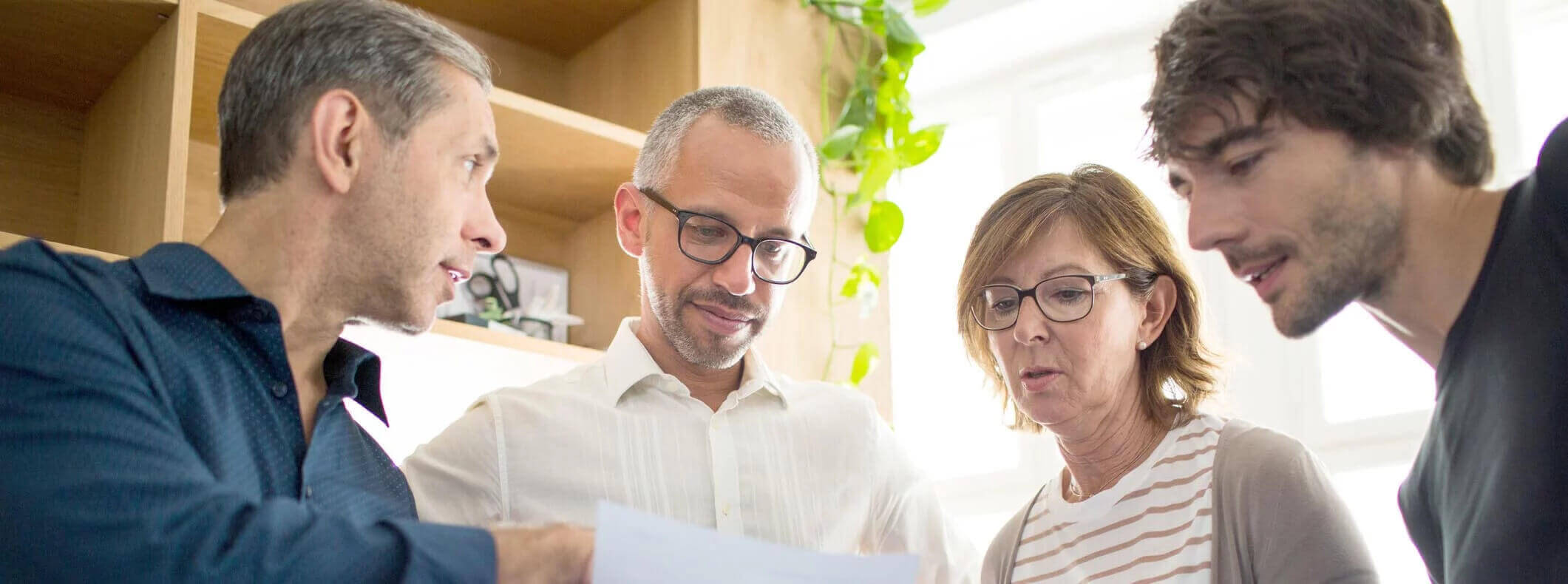Team building is such an important contributor to a positive and productive company culture. Team building activities foster collaboration, increase connection, enhance communication skills, and boost creativity and innovation. And who doesn’t want that?
The problem is that so many team building exercises have become almost cliché. Activities like trust falls, three-legged races, and scavenger hunts were the go-to team-builders three decades ago, but their relevance and effectiveness may not be as potent today. And it is important to remember that having fun together as an organization does not necessarily translate to team building.
While the issue of team building might not seem pressing to you as a business owner, quantitative data suggests that it probably should be. Team building and trust improve virtually every aspect of your business.
- According to the Harvard Business Review, employee socialization improves communication by over 50%.
- A recent Gusto Report states that employees who feel a sense of belonging at work are 54% more likely to stay in their jobs.
- In an article on team building, TeamStage reports that businesses with a fully-engaged workforce can deliver twice the revenue.
And these stats are truly just the tip of the iceberg. Even in the most challenging sectors, organizations with a strong sense of team are simply better positioned to effectively compete.
What Team Building Looks Like Today
Team building exercises have come a long way from the stale, outdated activities of the past. Today’s organizations need engaging, relevant, and fun exercises that not only foster collaboration but also instill a genuine sense of pride and accomplishment among team members. The goal is to create a work environment where employees feel connected and valued—no matter where they are or what role they play. Below are five innovative and engaging team building exercises that business owners can implement to build community and boost morale across the organization.
1. Corporate Social Responsibility (CSR) Projects
Overview:
CSR projects are much more than community service—they are powerful team building exercises that allow your employees to contribute to causes that resonate with your organization’s mission. By working together on charitable initiatives, team members can bond over shared values while giving back to the community.
How It Works:
Schedule regular opportunities for your team to volunteer at local charities, participate in community clean-ups, or collaborate with non-profit organizations. These projects can be tailored to align with the values and goals of your company, ensuring that the work feels meaningful and relevant. For instance, if your business is in the healthcare industry, consider partnering with local clinics or health drives. If you’re in technology, you might organize coding workshops for underprivileged youth.
Benefits:
- Fosters Teamwork: Working side-by-side on a common cause helps break down barriers and builds trust among colleagues.
- Enhances Company Reputation: Demonstrating commitment to social responsibility can improve your company’s image both internally and externally.
- Instills a Sense of Purpose: Employees feel a greater sense of pride and belonging when they know their work contributes to a larger, meaningful mission.
Best Practices:
Ensure that projects are well-organized and communicated clearly. Solicit employee input on causes they are passionate about, and rotate opportunities so that everyone gets a chance to participate over time. Finally, celebrate the team’s efforts with a debrief session or recognition event, reinforcing the positive impact of their contributions.
2. Brainstorming Challenge
Overview:
A brainstorming challenge is an excellent way to tap into the collective creativity of your workforce while addressing real business problems. This exercise encourages both individual innovation and collaborative problem-solving, providing a platform for diverse ideas to flourish.
How It Works:
Present your team with an unsolved challenge or an opportunity—perhaps a process that’s outdated, the development of a new product, or strategies to break into a new market. Organize the exercise in phases, starting with individual brainstorming sessions followed by small group discussions. Allow teams to mix and match ideas, and then reconvene for a larger group discussion where promising solutions are refined and presented.
Benefits:
- Promotes Innovation: Employees from different departments can offer unique perspectives, leading to creative, out-of-the-box solutions.
- Builds Cross-Functional Collaboration: When individuals from various parts of the organization work together, they learn to appreciate each other’s strengths and expertise.
- Empowers Employees: Involving team members in decision-making processes makes them feel valued and part of the company’s growth trajectory.
Best Practices:
Set clear objectives and time limits for the challenge to keep sessions focused and productive. Provide incentives for creative ideas—such as awards, recognition, or even a small bonus if a particular idea is implemented. Make sure to follow up with feedback, letting employees know how their ideas will be used to shape future strategies.
3. Creativity Sandbox
Overview:
A creativity sandbox is a fun, interactive way to spur innovative thinking among team members. By providing a space filled with various creative tools, you encourage employees to step outside of their usual work routines and explore new ideas without the pressure of immediate practicality.
How It Works:
Convert a small room or designated area into a creativity zone stocked with craft supplies, LEGOs, Lincoln Logs, small toys, and other gadgets. Divide your team into small groups and assign a creative challenge—this could be designing a prototype for a new product, visualizing a novel business process, or even crafting a representation of the company’s future vision.
Benefits:
- Unleashes Innovation: With a relaxed environment and creative tools at their disposal, team members are more likely to experiment and come up with fresh ideas.
- Encourages Collaboration: Working in groups allows for cross-pollination of ideas, leading to innovative solutions that might not emerge in traditional settings.
- Injects Fun into Work: The playful nature of the exercise can boost morale, making work feel more engaging and less routine.
Best Practices:
Ensure that the activity is well-facilitated—provide clear instructions, set some ground rules, and designate a facilitator to keep discussions productive. Consider awarding prizes for various categories such as “Most Innovative,” “Funniest Concept,” or “Best Overall Design.” This recognition not only motivates participation but also reinforces the value of creativity in your organization.
4. Team Building with Remote Workers
Overview:
As remote work becomes more prevalent, maintaining a strong sense of community among dispersed teams is more challenging than ever. However, virtual team building activities can bridge the gap, ensuring remote workers feel just as connected as those in the office.
How It Works:
Schedule regular virtual coffee breaks or team lunches via Zoom, where employees can socialize in a relaxed setting. Organize online icebreaker activities or host interactive games like Team Jeopardy, where small groups collaborate to answer trivia questions. The key is to create a virtual space that mimics the informal interactions that naturally occur in an office setting.
Benefits:
- Enhances Connectivity: Regular virtual interactions help remote workers feel included and part of the broader team.
- Builds Relationships: Casual, non-work-related conversations can strengthen bonds and improve overall team dynamics.
- Fosters Inclusivity: By actively engaging remote employees, you demonstrate that everyone’s contributions are valued, regardless of location.
Best Practices:
Use technology to your advantage—employ breakout rooms, collaborative platforms, and even virtual whiteboards to facilitate interaction. Rotate activities to keep things fresh and encourage participation. And remember, it’s not just about scheduled events; consider creating ongoing online communities where remote workers can share ideas, celebrate milestones, and support one another.
5. Storytelling Workshop
Overview:
Storytelling is a powerful tool for building empathy and connection within a team. A storytelling workshop invites employees to share personal experiences, offering insights into their individual journeys and creating a shared sense of purpose.
How It Works:
Organize a workshop where employees are encouraged to share stories around a specific theme—such as their first day at the company, a challenging work experience they overcame, or a hidden talent they possess. Set clear guidelines to ensure the conversation remains respectful and positive. Facilitate small group discussions where everyone has a chance to speak and listen.
Benefits:
- Deepens Understanding: Personal stories reveal the human side of colleagues, fostering empathy and mutual respect.
- Builds Community: Sharing personal experiences helps break down barriers and creates a sense of unity, as employees see the common threads that connect them.
- Inspires Change: Hearing how others have overcome challenges can motivate team members to tackle their own obstacles with renewed vigor.
Best Practices:
Create a safe, judgment-free space for sharing. Consider using prompts to guide the discussion, and ensure that the facilitator reinforces positive, respectful interactions. Wrap up the workshop with a debrief session where key takeaways are discussed, and any common themes or insights are highlighted. This reflective process can turn individual stories into a collective narrative of resilience and growth.
***
Modern team building is about much more than just occasional outings or fun activities; it’s about creating a cohesive, innovative, and supportive work environment that empowers every employee. Whether through engaging CSR projects, creative brainstorming challenges, playful creativity sandboxes, virtual gatherings for remote teams, or heartfelt storytelling workshops, the goal is to build a community where every team member feels connected, valued, and motivated.
By implementing these modern, engaging exercises, business owners can transform team building from a dated ritual into a dynamic part of their organizational culture—one that not only drives better results but also makes work a more enjoyable and meaningful experience for everyone involved.


.png?width=670&name=Untitled%20design%20(31).png)




